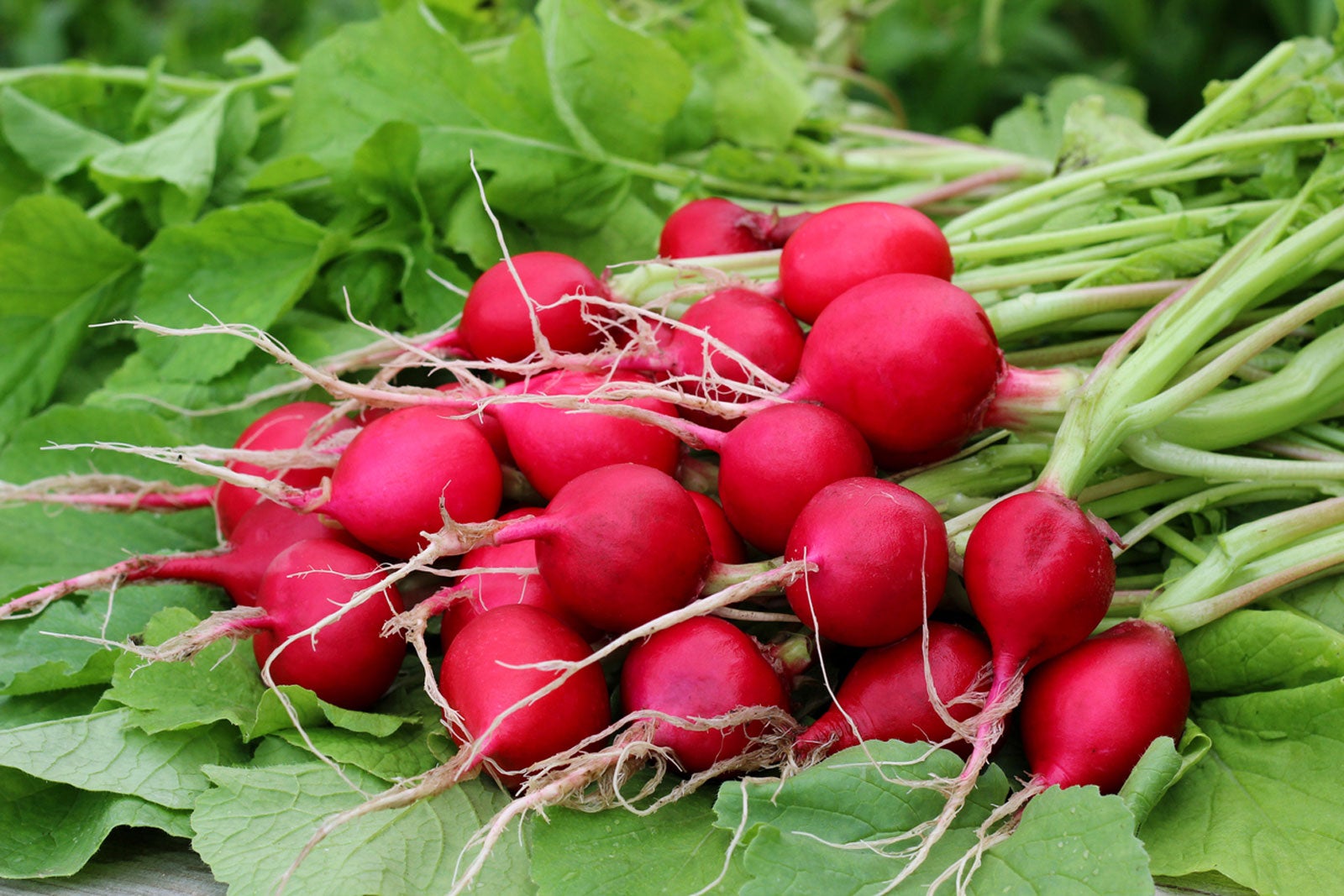Radish Planting Tips: How To Plant Radishes In The Garden


Radishes (Raphanus sativus) impart a spicy, peppery flavor and crunchy texture to salads. They provide a decorative accent on relish trays. When cooked, they maintain their flavor and texture, making radishes an excellent addition to roasted root vegetable medleys. Plus, growing radish plants is one of the easiest vegetables that gardeners can cultivate.
How are Radishes Grown?
Radishes are generally grown from seed and require a loose soil for proper root formation. Composted manure, grass and leaves can be added to improve soil fertility. Removing rocks, sticks and inorganic debris from the planting site is recommended.
Radishes grow best in cool weather and consistently moist soils. Heavy rains can compact soil and form a hard crust on the surface which inhibits root formation. On the other hand, drought stress makes radishes tough and alters their mild flavor.
How to Plant Radishes
Spade or till the soil to depth of 8 to 12 inches (20 to 30 cm). Sow seeds as soon as the soil can be worked in the spring or in late summer for a fall crop.
Plant radish seeds ½ inch (1.25 cm) deep. Space seeds 1 inch (2.5 cm) apart by hand, with a seeder or use radish seed tape.
Water lightly to prevent soil crusting and compaction. Germination takes 4 to 6 days. For a steady harvest, use succession planting by sowing radish seeds every 7 to 10 days.
The following radish planting tips should also help:
Gardening tips, videos, info and more delivered right to your inbox!
Sign up for the Gardening Know How newsletter today and receive a free copy of our e-book "How to Grow Delicious Tomatoes".
- If the soil becomes crusty, lightly sprinkle the surface with water. Gently break up the surface using your hand or a small cultivator.
- As radish roots reach an edible size, harvest every other one to increase the space between remaining plants.
- Radishes need 1 inch (2.5 cm) of rain or supplemental water a week. Water radishes deeply, as they have large taproots and few horizontal roots.
- Growing radish plants in full sun gives the best yields, but radishes can also tolerate light shade.
- Weed or mulch to control weeds.
- Plant several radish varieties for different colors, sizes and flavors.
When are Radishes Ready for Harvest?
Radishes mature quickly with most varieties being ready for harvest in 3 to 5 weeks. Radishes can be harvested at any usable size. Smaller radish roots tend to be zestier. As roots mature, they become tougher. If left in the ground too long, radishes will turn woody.
When radishes near maturity, sometimes the tops of their swollen roots will begin to emerge from the soil. One way to check on their progress is to pull up a sacrificial radish plant to see if the roots have reached a usable size.
To harvest round types of radishes, firmly grasp the foliage and base of the plant and gently pull the radish root from the soil. For longer radish varieties, like daikon, use a shovel or fork to loosen the soil so the root doesn't break when pulling. Harvested radishes store well in the refrigerator for several weeks.

Laura Miller has been gardening all her life. Holding a degree in Biology, Nutrition, and Agriculture, Laura's area of expertise is vegetables, herbs, and all things edible. She lives in Ohio.
-
 Moody Blooms For Spring: 8 Types Of Black Flowers To Add Drama To Spring Displays
Moody Blooms For Spring: 8 Types Of Black Flowers To Add Drama To Spring DisplaysFrom midnight burgundies to inky violets, several types of black flowers can enrich and embolden a spring display. Try these brooding bloomers for a moody garden
By Tonya Barnett
-
 Can Snake Plants Live Outside? Everything You Need To Know For Snake Plants Al Fresco
Can Snake Plants Live Outside? Everything You Need To Know For Snake Plants Al FrescoSnake plants can live outside given the right conditions, but be careful that they don't take over! Learn the best way to use snake plants in your landscape.
By Mary Ellen Ellis